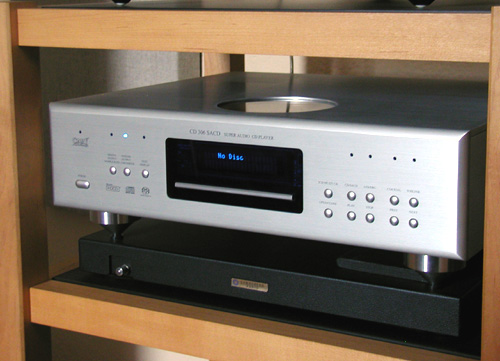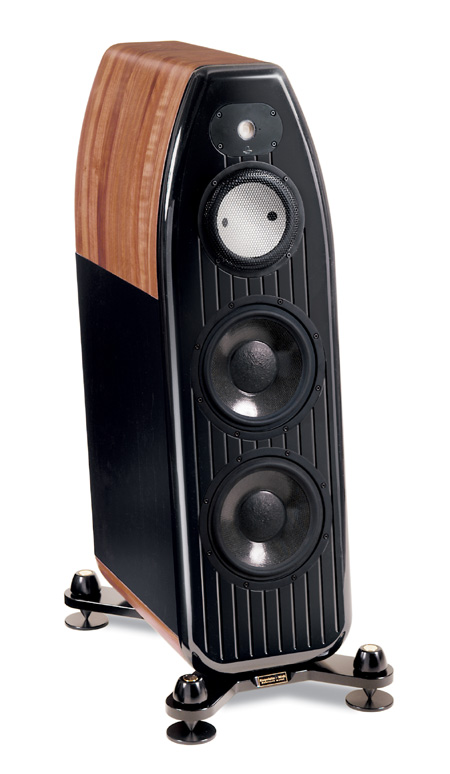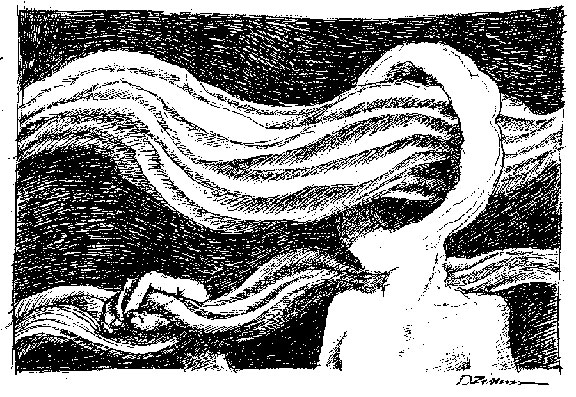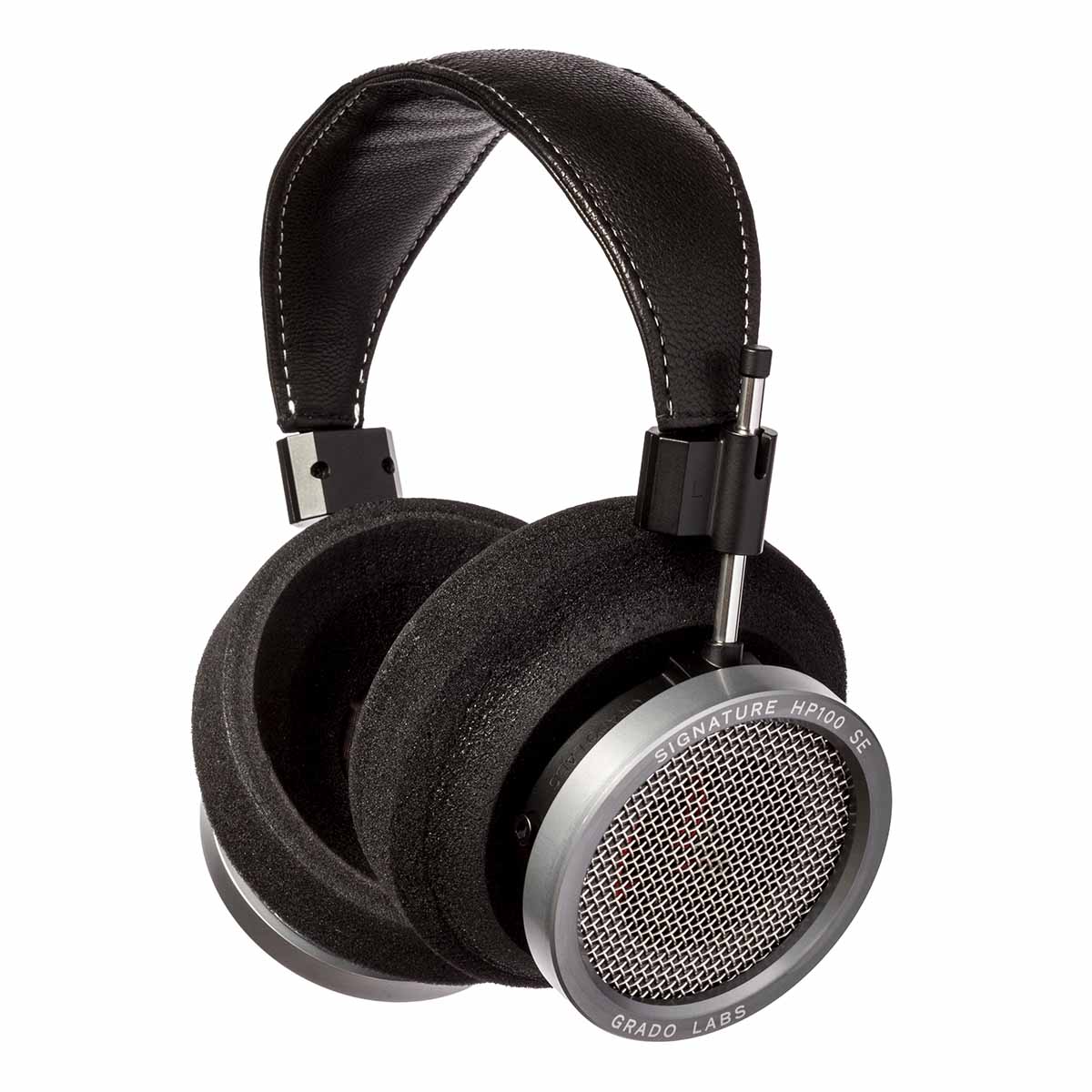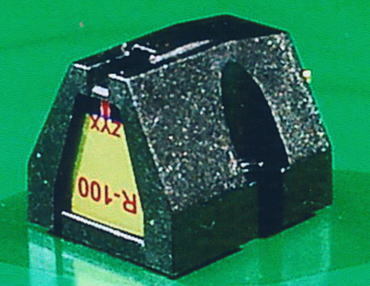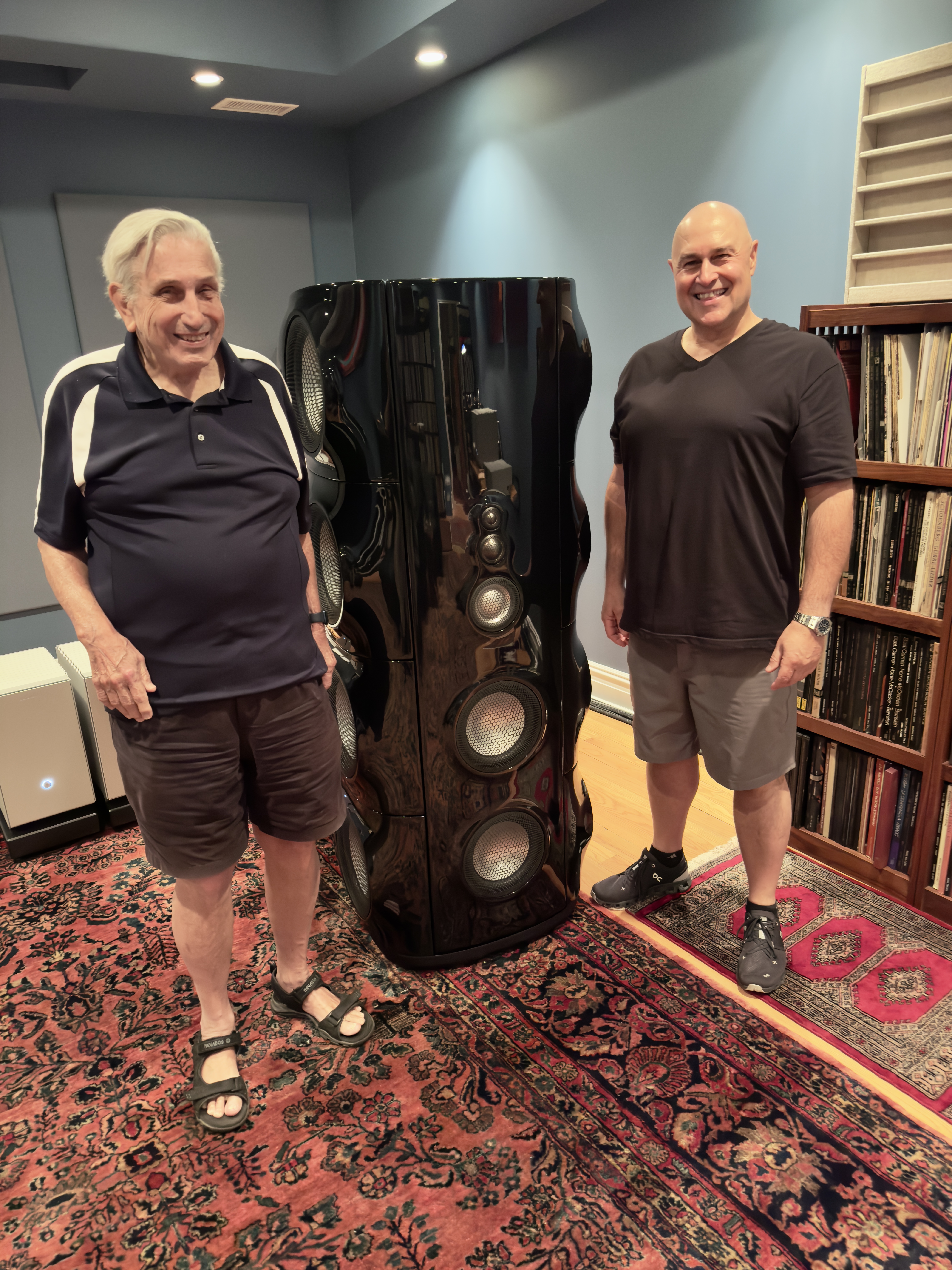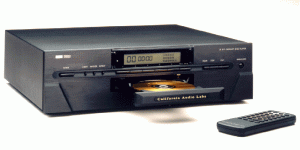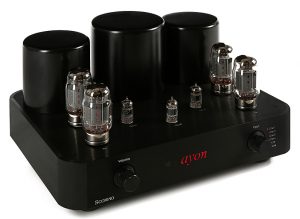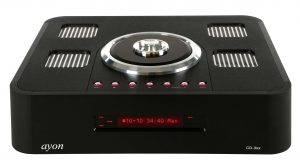This article, as reviewed by Ed Morawski and Dave Clark originally ran in Issue 2, August/September 2002, so while we call this section "New Old Stock - Articles from Our Days in Print" you are also going to see some articles from our early days of going online.
I feel I have a pretty fair perspective on CD players. I have heard many players at shows, and I have personally auditioned the Arcam CD72 and FMJ23, the Norh CD-1, and most of the Pioneers and Sonys, and I have owned the Muse 5 and 2 and the 8 and 296 combinations. The Muse 5/2 combo was the best I had heard until I got the 8/296. When I experienced down time on my CD player, though, I began looking around, intending to keep my Muse 296 DAC, which is wonderful. The Cary kept popping up at the top of my list. The 306/200 is pretty heavy, 35 lbs or so. The build quality is excellent, and while it is not a "jewel" (like, say, the Musical Fidelity Nu Vista), it looks okay, though the interior belies the industrial look of the exterior. The quality and construction is impressive. Copper abounds everywhere, and the transformers are massive and powerful looking.
Despite Cary's warnings about the need for 100 hours of break-in, I couldn't wait to give it a listen. From the first few notes I knew this was something extraordinary. The soundstage was unbelievable. It expanded in all directions. My smallish, 10 x 11 room sounded like a concert hall (okay, an intimate concert hall). Imaging was precise. Detail and resolution were unbelievable. After that first listen, I put the 306 on repeat and let it play for the next four days. After the burn-in, the incredible soundstage was still there, and I still couldn't believe that a CD player could do this. What design factors cause it? Does the engineer's manual say, "Use this capacitor or that transformer to increase soundstage?" Or does it happen by happy accident? I doubt it! The designers at Cary must be magicians.
The detail and resolution were also still evident. When a guitar string was plucked, I heard the musician's finger sliding up the string, I heard the note, the air humming, and the gradual diminishing, but all so quickly. There was no evidence of harshness, grain, or edge. Even the brushes on the drums were no longer indistinct sounds, but as fully formed as each piano key. I have a highly modified Pioneer PD-65 with a new power cord and Superclock that only gets used as a transport to my Muse 296. I was pretty happy using this while my equipment was in repair, but not only is the Cary not in the same league, it is not in the same universe! In fact, it may be in a league of its own.
The 306/200 easily beats the Muse 8 as well, which astounds me. It is clearly a higher-resolution machine, and has a much better overall presentation. I was fortunate to be able to hear Keiko Matsui in concert one Sunday, then come home and listen to her CDs on the Cary for comparison. Let me put it this way: I was able to attend TWO Keiko Matsui concerts that night. Dim the lights and close your eyes and she is there.
The 306/200 also does HDCD. I was not aware how many of these I owned until I tried the Cary. It turns out that most of Keiko Matsui's discs are HDCD-encoded, and I had Dave Brubeck’s Time Out. Wonderful reproduction, without being overdone like some SACDs and DVD-Audio discs. The Cary upsamples, and it is remote-controlled, so you can flip back and forth. It makes a hell of a difference on some recordings and none on others. Strangely, upsampling to 24/192khz seems to work best on the HDCD-encoded discs, but it does defeat the HDCD when you switch it in.
The 306/200 has it flaws, though they are minor. It seems like all the manufacturers have jumped on the blue-LED bandwagon. While they are cool, Cary needs to tone down the brightness! There are glaring bright blue lights all over the thing. The remote is also too much. You either get a super-cheap piece of plastic or, like the Cary, a ridiculously heavy aluminum slab. I know this is supposed to portray "high end," but come on. This thing must weigh two pounds! Interestingly enough, the Rogue remotes also switch functions on the Cary—just a warning in case you have a Rogue and are considering the Cary.
In sum, the Cary 306/200 is a significant advance in music playback. I have been dipping into SACD with an admittedly cheap Sony CE-775, and I am under whelmed. The Cary sounds better on Redbook CDs than the Sony, but also more enjoyable than SACDs! If your CD collection is extensive, the Cary is a worthwhile purchase in lieu of the meager pickings on SACD. You could spend two or three times or four times as much as the Cary 306/200, but would it be that many times better? No way!
ED MORAWSKI'S SYSTEM
LOUDSPEAKERS
Speakers are DIY two way ported with Scan Speak 8545 midbass and 9500 tweeter using the acoustic-reality serial crossover.
ELECTRONICS
Plinius CD-LAD preamplifier and SA-102 amplifier.
SOURCE
Resolution Audio Opus 21 CD player.
CABLES
Empirical Audio Halographic or Stealth Audio CWS XLR interconnects, Clarity 7 speaker cables and DIY power Cord. Vibrapods under all equipment. Dedicated power circuits with Brick Wall Filters.
The Cary 306/200 CD player is a serious attempt to build a "state of the art" product. Cary threw everything including the kitchen sink into this player, except the ability to play SACDs. In my opinion, this hardly matters—Carol and I have yet to find a SACD release we would buy—but there are still tons of 16/44.1 CDs out there, and more coming all the time. With its ability to upsample (24/192) and do HDCD, the 306/200 is a killer machine for Red Book CDs. Helping out are eight Burr Brown 1704 DAC chips (four for each channel), an enormous power supply, extensive shielding, and choice parts. The player is rather heavy at 35 lbs., and is very solidly built.
The manual says break-in time is 100-200 hours, whereas word has it the player likes to see 300 or more before things settle down. When they do, be prepared. The 306/200 is not for the faint of heart. The player will provide dynamics and bass slam that is second to none. I have heard this player up against the highly regarded Sony SCD777ES with all the mods that are going about the web (as well as some that have yet to be mentioned!). The modified Sony has a sweeter and more relaxed nature, and if that is what you want, the Cary may not be for you. I don’t mean to suggest that the Cary is dry and etched—that is hardly the case—just that it leans in a direction opposite of that when compared to the Sony. For me, the Sony was too soft and sweet, lacking a certain degree of excitement heard from the Cary. On the other hand, the Sony could not match the Cary’s deeper and more powerful bass, and I have yet to hear another player that can do so.
I have never heard such bass control and depth, either in my room or that of the Sony owner. We both own full-range speakers matched with components that let them sound their best. Using the Cary allowed both speakers to rumble and rattle as never before. Using the American Beauty score (a great demo disc, though not one to listen to for musical pleasure), the Cary elicited the same startling and jaw-dropping response every time. The Cary has even eliminated the bass problem I used to have in my room—a hump at 125Hz that was evident with my regular set-up and WAY more prominent with the Sony. All music that had information at this point resulted in bass boom. The Cary has fixed this. It is rock solid and as tight as all get-out.
The Cary is neutral and up front, being neither warm nor rich, lean nor washed out. It gets the bits out into the room without adding any anomalies that could be defined as a "character. Unlike that I have heard from the French CD machines, where they can easily be "characterized", no doubt as a result of some form of coloration or "shading." You know what I mean, that stereotypical "rich and warm" presentation along with a softer top and bottom. Not necessarily a bad thing, as I did enjoy my time with the Metronome—it is a very musical player and never makes the music sound bad. Unfortunately, way too often the music always sounded the same—not enough resolving power. This will work in the right system and with the right music. Just not for us. We want a sound that is fast, clean, and resolving.
The Cary on the other hand, is fast, clean, and resolving, but not the least bit analytical in terms of being cold and sterile. It is very transparent, and will allow you to hear what is on the discs. But like I said, while it is revealing, it is not hyped in any way. Bad discs sound bad, and good discs sound good. Isn’t that what’s all about? You’d better be sure your system is up to this level or truthfulness, or you may not find it to your liking.
I have found that using the upsampling (selectable from the remote) allowed me to get better sound from 16/44.1 recordings. I don’t mean more information, as it can’t create what is not there, but upsampling adds a degree of flesh and warmth to poorer discs, making them sound way better. And good discs get better, too! On the other hand, HDCD discs do not sound nearly as good when upsampled, as this bypasses the HDCD chip.
The Cary offers an enormous soundstage, although a shallower one than I am used to with my regular setup, or that I heard with the Sony player. The Cary also has a bit less "air" and dimensionality than those other two setups. Is this a serious drawback? Not to me, when I consider what it does in other areas. Pace, speed, clarity, resolution, bass extension, and dynamics (micro and macro)—all are topnotch in my book. Plus the Cary puts the performers out into the room and not off into the distance. It is more upfront and more visceral than the other machines, and this is what Carol and I are after.
I do have some issues. One, the remote can be a bit of a pain, in that the buttons have dual functions. They not only control CD playback, but by moving a switch, they control the analog and digital operations of the player. If you forget which it is set to, pushing a given button will not get you the results you were after, and this can get a bit annoying. (For instance, the stop button also switches upsampling, and the forward and back buttons change digital inputs.) Two, the player gets hot, though with its power supply, what do you expect? This beefy power supply is no doubt the cause of the players amazing speed, clarity, and bass performance. Give it plenty of room to breath. Three, as good as the Cary is, it still benefits from the Taddeo Digital Antidote II, good power cords (am using the Sahuaro Slipstream and also liked the Elrod EPS 2), some Shakti Stones, and a good foundation (I use the Townshend 3D Seismic Sink).
I bought the unit and could not be happier, but as you can read elsewhere, I have done something to it that moves its performance up a notch. Is it worth $5K? Considering how well it performs, and its build quality, yes!
DAVE CLARK'S SYSTEM
LOUDSPEAKERS
Reimer Speaker Systems Tetons.
ELECTRONICS
Clayton Audio M100 monoblock amplifiers. E.A.R. 834P phono stage. Blue Circle BC3000 preamp w/Tunsgram tubes, and BCG3.1 power supply.
SOURCES
EAD T1000 transport and EVS Millenium II DAC with Audient Technologies’ Tactic and Audit, and Taddeo Digital Antidote Two. Linn Axiss turntable with K9 cartridge and Basik Plus arm.
CABLES
JPS Superconductor+ interconnects, digital, and NC speaker cables. Sahuaro Slipstream, Blue Circle BC63, Clayton Audio, and JPS Kaptovator AC cables.
ACCESSORIES
PS Audio P300 Power Plant. Dedicated 20 and 15 amp ac circuits. Shakti Stones and On-Lines. EchoBuster room treatments. BDR cones and board, DH cones, Vibrapods, Mondo racks and stands, Townshend Audio 2D and 3D Seismic Sinks, various hard woods, etc.
306/200 CD Player
Retail: $5000
Cary Audio
919. 481. 4494




